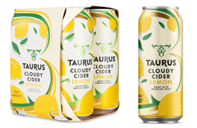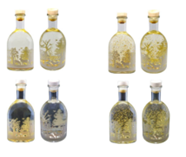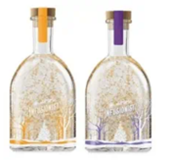Everybody knows that trade marks are necessary to protect a brand’s logo and name, and a lot of people know that registered designs are a powerful tool in stopping counterfeit goods, but did you know these rights can also be used to help protect against unwanted “dupes” (also known as “copycat” or “lookalike” products)? Dupes/copycats deliberately mimic a successful product, and they imitate the look and feel to unfairly benefit from the goodwill attached to the product through the “halo effect,” i.e., the impression that if it looks like the original, it must be as good.
Dupes in the United Kingdom
However, there have been some useful cases over the last few years, including a very beneficial UK Court of Appeal case handed down in January this year, and each contains helpful guidance for brands looking to use registered designs and trade marks to protect against dupes and lookalikes:
There is ever a lament from brands that there are not enough legal tools in the United Kingdom to prevent copycats from using a hero product’s unique look, feel or effect to maximise their own sales. We can see this through a long line of caselaw where a passing off claim (an English law tort where a trader misrepresents its goods or services as being those of another) has failed to meet the high threshold of “misrepresentation,” i.e., consumers must actually be deceived and believe the goods to be those of the claimant.
In January 2025, Thatchers won its appeal against the decision in January 2024, and it successfully established that supermarket Aldi infringed its trade marks by selling a copycat cider with similar labelling to Thatchers’ cloudy lemon cider packaging (see our articles here and here).
Note: The UK Court of Appeal found the judge had erred by not considering the three-dimensional use of the Thatchers’ mark as printed on the packaging and can.

Key points to note:
- The UK Court of Appeal found that the Aldi cider “rode on the coat-tails” of Thatchers’ cider, that Aldi purposefully intended to remind consumers of Thatchers’ trade mark, and that it was “entirely possible” to convey that a drink is lemon-flavoured without such a close resemblance; therefore, the similarity “cannot be coincidental.”
- Aldi benefited by achieving significant sales with no promotional spending as a result of the “transfer of image,” which created an “unfair advantage.”
- The Thatchers’ mark was found to have reputation despite a relatively short period of sales.
In March 2024, Lidl succeeded in upholding the decision that Tesco had infringed its trade marks (see our article here). Although this case it not a “dupe” or copycat case per se, it shows the power of clever trade mark registration strategies, as well as the importance of having trade mark registrations for key elements of branding.



Key points to note:
- The court found that a substantial number of customers would be misled into thinking that Tesco’s clubcard scheme and prices were a price-match to Lidl for equivalent goods.
In February 2024, the UK Court of Appeal upheld the decision that Aldi had infringed Marks & Spencer’s (M&S’s) registered designs, as their gin bottles did not create a different overall impression on the informed user (see our articles here and here).


Key points to note:
- The similarities between the designs were found to be “striking.”
- A wide design freedom was found, which further highlighted the similarity between the products.
In 2021, William Grant & Sons, maker of Hendrick’s Gin, succeeded in its claim in Scotland for interim relief against the sale of Lidl’s Hampstead Gin. The claim was successful because they were able to show reputation in the Hendrick’s Gin trade mark and that the Hampstead product took unfair advantage of, or was damaging to, the distinctive character or the repute of the Hendrick’s Gin trade mark.
Key points to note:
- The claim failed on passing off and a pure infringement claim.
- Similarity was found in the dark, apothecary-style bottle, as well as the diamond label shape.
- The claim was ultimately successful because of the reputation in the Hendrick’s Gin bottle, so there was no need to demonstrate customer confusion.
Key Learning for Brands
Designs
- For new products, register a design wherever possible, as it is easier to succeed in a claim for infringement, and there is also no initial validity review of designs by the UKIntellectual Property Office.
- There is no need to prove confusion or reputation for design infringement claims; a claimant only needs to show the same overall impression on the informed user. This can mean less legal spend on obtaining “confusion” and “reputation” evidence.
- You can file a registered design in the United Kingdom (and the European Union, if relevant) with a deferred publication date if the release is not immediate to protect the design as soon as possible.
- Designs can protect the product’s appearance in whole or in part for unique stylistic elements, such as lines, contours, colours, shapes, texture and materials (e.g., sole patterns on footwear).
Trade Marks
When developing a product or considering protection for a product already on the market, think about what trade marks could be filed to protect the look/feel of the label or product. In particular, consider the following:
- The shapes and colours of the product and label.
- Filing simplistic versions of the packaging or labelling design, e.g., filing a label without the brand name if certain elements are unique enough.
- Filing monochrome versions of the marks, as well as colour marks if the pattern/imagery is distinctive.
- Any stylistic positioning elements that could be filed as position marks (although careful drafting is necessary to make sure the trade mark is sufficiently clear to be enforceable (see Thom Browne v Adidas)).
- If the overall shape of the product could be a 3D mark.
- If it is a product with reputation, think carefully about what makes the product unique and how it stands out in the market.
A word of caution on trade marks: you must have an intention to use or already use the trade marks in some way and cannot only file the trade marks as a legal weapon.
We have not touched on copyright here, but if design and trade mark claims are not available, a claim under copyright could be another avenue to explore.